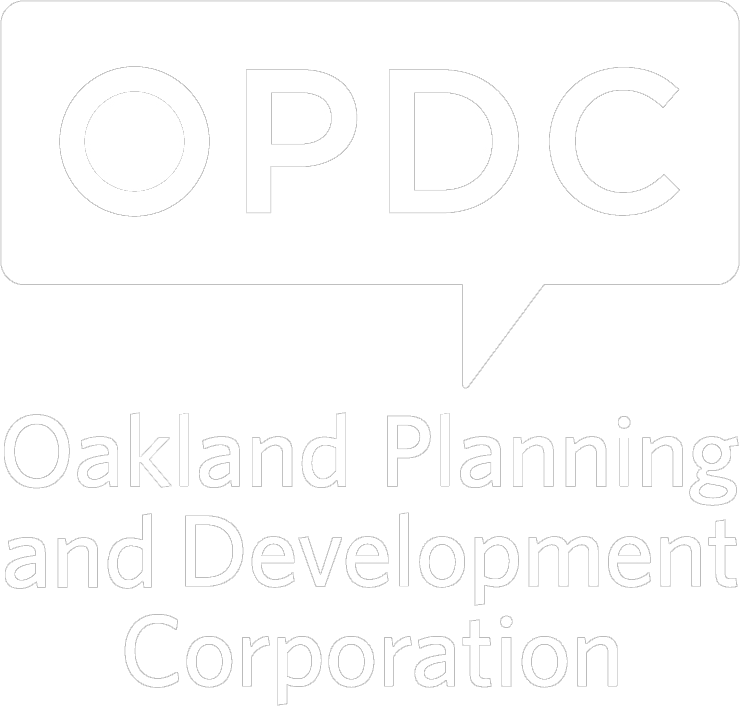The Journey to the Oakland Plan
The Oakland Plan, a 10-year roadmap for our neighborhood’s future, was adopted on June 14, 2022, by the City Planning Commission. The Department of City Planning (DCP) facilitated the planning process; OPDC participated. Oakland has had a lot of plans, especially The Oakland 2025 Master Plan. What’s different about this one is that the city now has a process to formally adopt neighborhood plans so that recommendations direct city policy and investments.
During the nearly two-year planning process, OPDC staff and board members were deeply involved. We provided in-depth analyses and discussed the planning process at community meetings, but we found it challenging to engage the community in the process. Because of the COVID 19 pandemic, DCP moved the process online with mixed results. It was difficult for all members of our community to grapple with the complicated plan content via virtual meetings and a website that some had difficulty navigating. This became even more complicated when there was large-scale rezoning proposed that was done outside of the plan process.
From left: Erik Mednis, Kathy Gallagher, MaryAnn LeDonne, Kelly Mednis
“The Oakland Plan process was already complex,” said Kathy Gallagher, president of Bellefield Area Citizens Association. “But it became unnecessarily complicated when Council Bill 2021-1906 was thrown into the mix. Residents were confused.”
To help the plan serve Oakland’s residential community, OPDC focused on a handful of key priorities during our participation in the process. We advocated for inclusionary zoning so that new apartment buildings will have affordable units included in them. This supports economic inclusion. We advocated for equitable development so that new commercial developments could generate resources to help Oakland neighbors. We argued for strategies to have density of undergraduate student housing close to campus—at prices that students can afford. This relates to our advocacy for recommendations to preserve and enhance our residential neighborhoods.
“I didn’t feel there was adequate emphasis on permanent residents,” said Gallagher of the plan. “We want a balance of people who live here all the time and make Oakland their home.”
Once DCP issued a draft of the plan, OPDC provided exhaustive comments, both big and small. As for major themes, we made sure affordable homeownership was a priority recommendation with the Oakland Community Land Trust a prominent tool for achieving it. We argued that the Community Reinvestment Fund provide benefits collected in Oakland directly to the Oakland community. We urged clarity about subsidized student housing as a key component for a successful housing strategy, and that typical funding sources for affordable housing would not apply to undergraduate students. Therefore, other resources—from the university itself—are needed.
“With the Community Service Hub planned for Herron Hill Pumping Station, we’re addressing preservation as well as community building.”
–Kathy Gallagher, Bellefield Area Citizens Association president
In the draft zoning proposals, we called for all campus, hospital, and classroom uses to be allowed only in EMI districts, not other mixed-use zones. We also pointed out areas that DCP needed to reduce proposed heights in new zoning districts to minimize negative impact on adjacent residential context.
When the final draft plan was presented to planning commission, it was clear that “a lot of our changes made it into the recommendations,” said OPDC Executive Director Wanda Wilson. “There are a lot of positive things in this plan, even though we didn’t have the amount of community input that we wanted.” The commission approved the Oakland Plan at that meeting. They approved the zoning proposals with conditions.
The Oakland community can work together over the next ten years to implement the plan—to realize the goals of racial and economic justice, quality development, and excellent urban design that will be well worth the effort.


